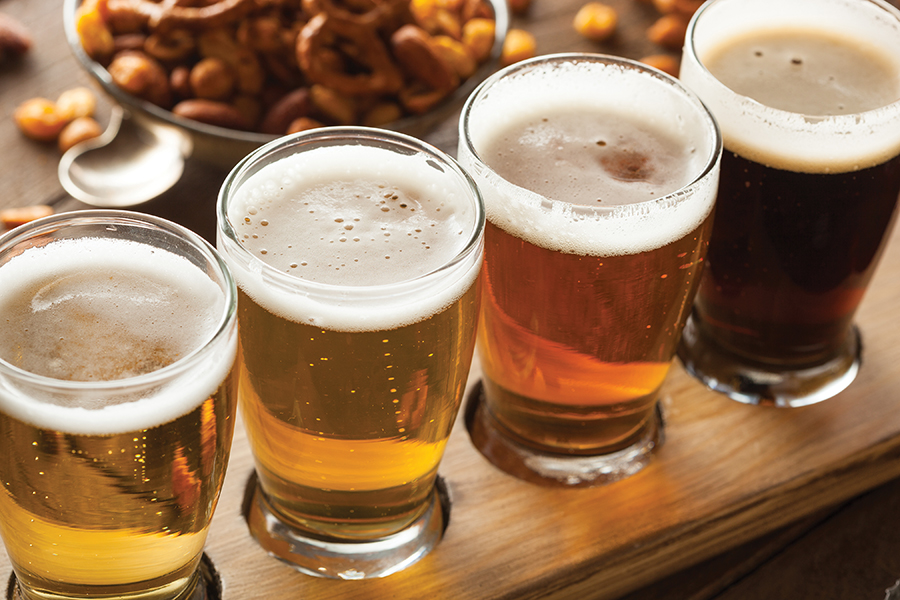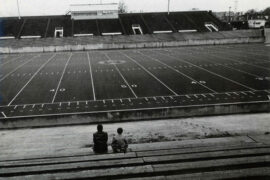By Matthew DeBord
HQ 101 | SPRING 2018
American beer was once a global laughingstock. Remember those bad old days, when the choice was largely between megabrewed lagers such as Budweiser and Miller High Life? Those quaffs have their place — I am personally sort of fond of Pabst Blue Ribbon as a summertime barbecue beer — but it’s actually rather amazing how far brewing in the USA has come since I was a youthful consumer.
The big story of the 1970s and 1980s was of course wine. That revolution was centered on California; and in the second decade of the 20th century, we can safely say that American grapes can match and exceed the best Europe has to offer.
But wine is highly dependent on where the grapes that make it are grown, on the quality of those grapes and on the skill of the winemaker. Throw in weather and variable vintage years, and you have a formula for a limited revolution in drinking.
Beer, meanwhile, has a longer history in America — brewing dates back centuries — and can be made just about anywhere. As a result, beer-making hotspots have emerged everywhere, from Portland, Oregon, to New York City.
The movement is generally referred to as “craft” brewing and it can be deceptive. Some megabrands have established crafty looking sub-brands to jump on the trend. But the true craft stuff now occupies much shelf space at specialty retailers and grocery stores, so all you need to dive in is a bit of education.
The best place to start is with the beer that effectively kicked it all off: Samuel Adams Boston Lager. It’s been around since the mid-1980s, but it’s easy to find just about anywhere. It still tastes great and, more importantly, opened the floodgates for beer that indeed tasted like something. The flavor is toasty, with a bit of pepper and some sweetness.
From here, we can divide the beer world into two groups: lagers and ales. The lagers are what we know well in America because this category encompasses the Buds and Millers, but it also showcases numerous more interesting brews. One of the better known is Anchor Steam, a tasty concoction that showcases this take on the diverse lager style.
Ales are where much of the action has been in the past decade as craft brewing has exploded. The marquee style is India Pale Ale, or IPA. The origins of this style can be traced to imperial England, when beer was sent to colonial soldiers in India. Many new brewers in the United States have adapted the basic IPA formula, which is heavy on an ingredient called hops. These lend bitterness to a brew, along with citrusy notes.
My favorite is called Sculpin IPA, made by the Ballast Point Brewing Company of San Diego. IPAs aren’t necessarily all that full bodied, and this one is no exception. But it’s brimming with bracing taste.
Once you’ve worked through some of the newer lagers and gotten down with IPAs, you can start to scope out some of the more robust brews. Everyone knows about Guinness, an Irish stout that’s defined by its dark color, rich flavor and creamy texture.
There are many other stouts around these days, so you don’t have to content yourself with Guinness alone. You can also explore porters, which are a bit lighter than stouts. You will want to be aware of alcohol levels during your adventure. American lagers are relatively low, at around five percent. But craft brews can climb into the double digits.
You’ll also be spending a little more money to delve into snazzier brews. Six 12-ounce bottles will often run above $10 and can push $20. In my experience, you get what you pay for. Not all craft brews are outstanding, but most are pretty good, and there’s a direct correlation between price and quality. I routinely spend $15 on a six-pack.
Now here’s an important tip. Many of these new brews aren’t meant to be drunk ice cold. More like cool — cellar temperature, like wines. And you don’t want to swig from the bottle or can. There are different glasses for different beers, but a basic pint glass will get the job done. The key is to pour your beer to create a decent layer of foam on top. This enhances the aromas and flavors, and allows the brew to shed some gas, making for a more pleasant drinking experience. As you drink, you can also observe the “lacing” of foam on the inside of the glass.
Most of these beers aren’t intended for copious chugging, either. One or two is plenty. And don’t neglect the food. Sure, burgers are a nice choice. But so are smaller plates of chow, meats and cheeses, and olives and nuts. If you’re in doubt, just pretend that you’re drinking wine!





